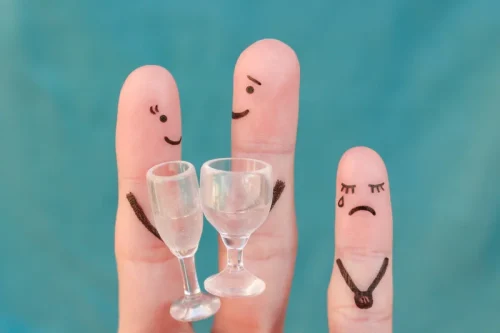
Side effects may also be psychological, with testosterone often being connected to increased aggressiveness because it impacts the brains subcortical structures in the amygdala and the hypothalamus. As with any anabolic steroid use, withdrawal from testosterone use may lead to depression, and even suicide. In competitive sports, doping is the use of banned athletic performance-enhancing drugs (PEDs) by athletes, as a way of cheating. The use of drugs to enhance performance is considered unethical and is prohibited by most international sports organizations, including the International Olympic Committee.

Doping from the beginning to the present day
Previously, diuretics were detected in biological samples through the use of high-performance liquid chromatography (HPLC) coupled with ultraviolet-diode array detection (UV-DAD). However, this method was not deemed rigorous enough in determining the unequivocal identification of banned substances. For this reason, international anti-doping regulations have required the implementation of mass-spectral methodology to test samples. Modern sport is plagued by suspicions that many top athletes resort to drug-taking—doping—to enhance their performance, but this is not a new phenomenon. Its origins can be traced as far back as the ancient Olympics, where competitors would drink ‘magic’ potions or eat special foods to gain an edge over their rivals.
Anabolic Agents (Including Testosterone)

The current conversation around the practice can be traced back to the revelation of steroid use in MLB players back in the late 90s to early 2000s. More than 24 MLB suspensions have been related to performance-enhancing drugs since 2005; on the NFL side, hundreds of games have been missed due to temporary suspensions related to doping. The health risks of drug abuse in athletes and the unfair advantage experienced by them were significant enough to induce the formation of the World Anti-Doping Agency in 1999. Such endurance races eventually increased in popularity to the extent where participants stood to win rather impressive prizes. It proved to be a worthy incentive for the athletes to consume substances to improve their performance, even with the side effects that many of them caused, such as psychosis.
Blood doping
Ketamine is FDA approved for the purposes of anesthesia and an S enantiomer version of the drug known as Spravato (esketamine) has been approved for depression. Intravenous racemic ketamine (mixture of R and S enantiomers), the most commonly used form for treatment, has not to date been approved for depression and neither version is approved for substance use disorders. Typically, this treatment involves six 40 min infusions over the course of 2–3 weeks. Currently, there are limited data to support the potential benefits in alcohol, cocaine and opioid use disorders.
- This immense time commitment might be another roadblock for those seeking rapid recovery in the context of the sporting world pressures.
- Over the past 150 years, no sport has had more high-profile doping allegations than cycling.16 However, few sports have been without athletes found to be doping.
- Side effects of creatine can include gaining weight and cramps in the belly or muscles.
- It is thought that athletes’ attitudes towards drugs are heavily influenced by the culture of sports [1].
- Anabolic steroids have no medical use that’s approved by the government.
- In women, they will begin to develop ‘manly’ features such as baldness, more body hair, and a bigger clitoris.
In a way, the doctor coming into my room, offering me this little red, egg-shaped testosterone pill, in a way that was almost introducing me to the “A Team.” And for me, I felt that was a big opportunity, that was my chance to ride in the Tour. And it showed that they had faith in me and that they thought I had a future in the sport. I didn’t really think about it too much, I just knew he was a well-respected https://ecosoberhouse.com/ doctor that worked with big champions over the years and that I should listen to him. I knew it was wrong from the moment I put it in my mouth, for sure. This was my opportunity, everybody else was doing it, so I kind of had to just join the club and not think so much about it. The primary medical use of these compounds is to treat conditions such as asthma and other respiratory ailments.
Furthermore, athletes (or athletic programs) taking explicit measures to evade detection exacerbate the ethical violation with overt deception and cheating. Other performance-enhancing drugs, such as human growth hormone, erythropoietin, and stimulants, can cause an array of adverse effects. These effects include many severe cardiovascular reactions, such as hypertension, reduced blood pressure, pulmonary embolism, stroke, enlargement of the heart, and heart attack.
- When used to treat legitimate medical conditions such as heart failure, high blood pressure, kidney and liver problems and glaucoma, and under the supervision of a trained doctor, diuretic use is quite safe.
- To counteract these side-effects, scientists developed steroids that retain their anabolic effects but have a lower androgenic effect.
- Blood doping, which often involves the use of prohibited erythropoietin, or EPO, increases the number of red blood cells in the body.
- There are health risks involved in taking them and they are banned by sports’ governing bodies.
What next in the fight against doping?

Even before his Sydney 2000 Olympics heroics, Thorpe was on the world stage as one of Australia’s biggest sporting stars ahead of a home Games. He said at the time the speculation that he was a cheat was “so upsetting” and the way the information was leaked to French journalist made him feel “deeply alarmed”. If you have a severe drug use in sports addiction, you may need hospital-based or residential treatment. Residential treatment programs combine housing and treatment services. By clicking “Submit,” you certify that you have provided your legal name and phone number, agree to the terms and conditions and privacy policy, and authorize Addictionresource to contact you.
The family physician is a critical player in addressing the use of performance-enhancing drugs in recreational athletes of all ages. Family physicians should continue to be alert to signs of use of traditional performance-enhancing drugs, such as anabolic-androgenic steroids and stimulants, and also be aware of the emergence and accessibility of novel doping agents. One of the most commonly abused performance-enhancing drugs, testosterone, comes with a wide range of immediate and long-term side effects. These often start with visible changes, including acne, shrinking testicles, and breast tissue development in men, and the development of an Adam’s apple and additional body hair in women. Continued use can cause the body to stop producing hormones naturally and lead to organ enlargement, stunted growth, liver damage, and fertility issues. Moreover, natural testosterone levels may never recover, making the consequences of doping irreversible.

However, a common factor is—as one would assume—improved performance and physical condition. Essentially all of these substances have side effects, even the ones which are found naturally in the body. Finally, we can conclude that taking into account the human nature and the social and economic implications of professional sports, the end of doping in sports is most likely an unrealistic term. Opponents of allowing athletes to blood-dope argue that blood doping is dangerous and can lead to athletes’ deaths, that normalizing blood-doping is asking athletes to risk their lives to play a sport, and sport doesn’t need more athletes that break the rules. The initial ABPs contained a standardised approach to the profiling of an athlete’s haematological variables (blood module) for the detection of blood doping.






